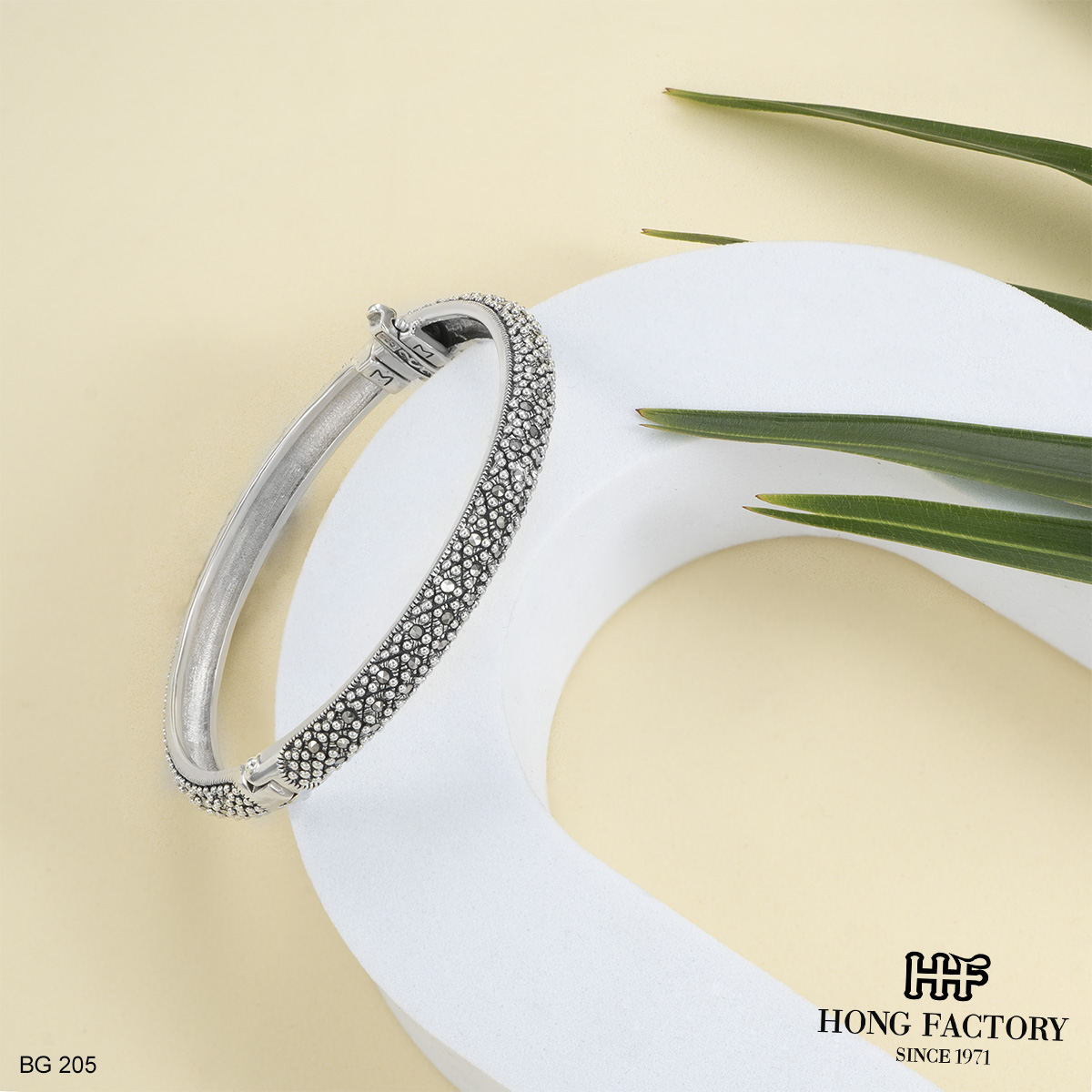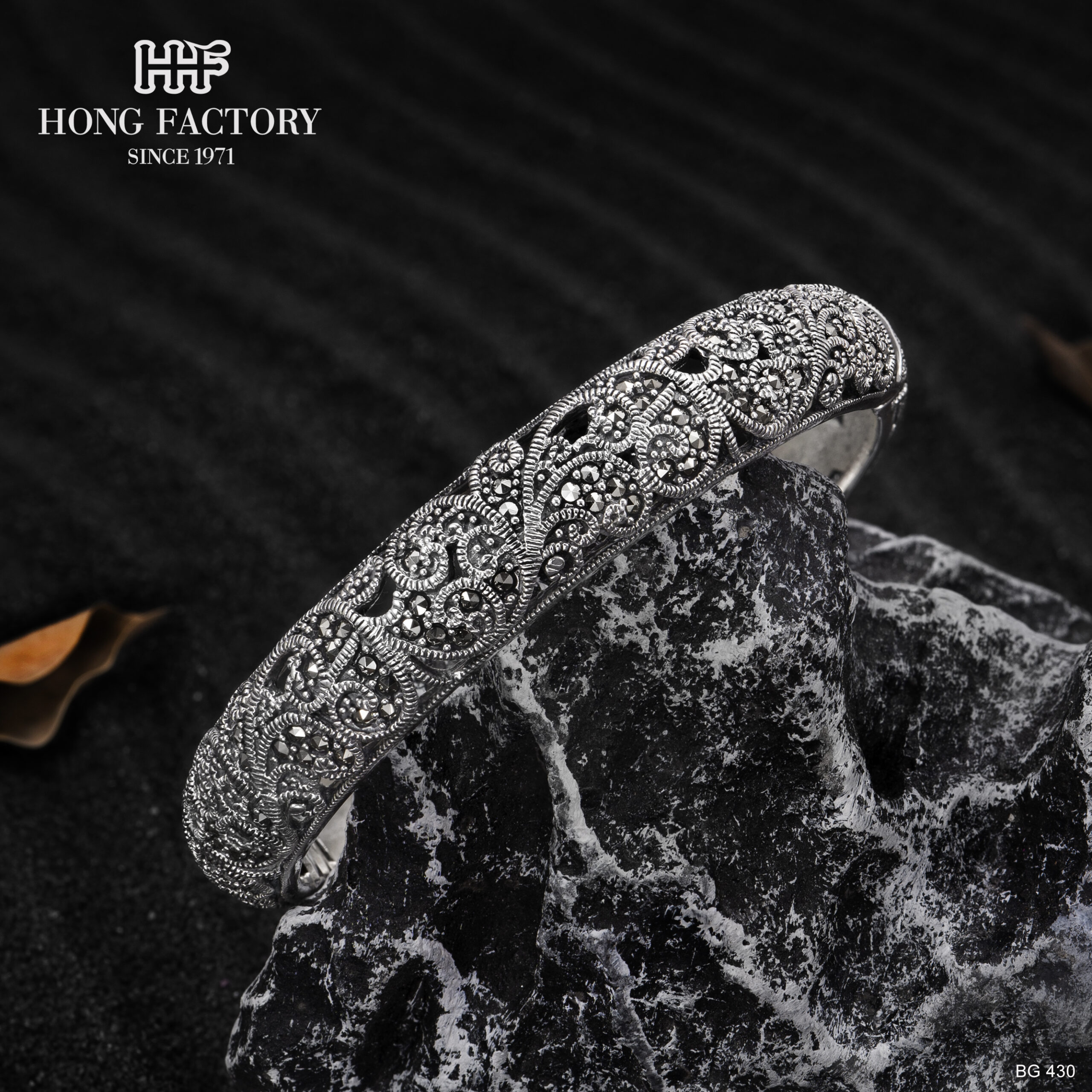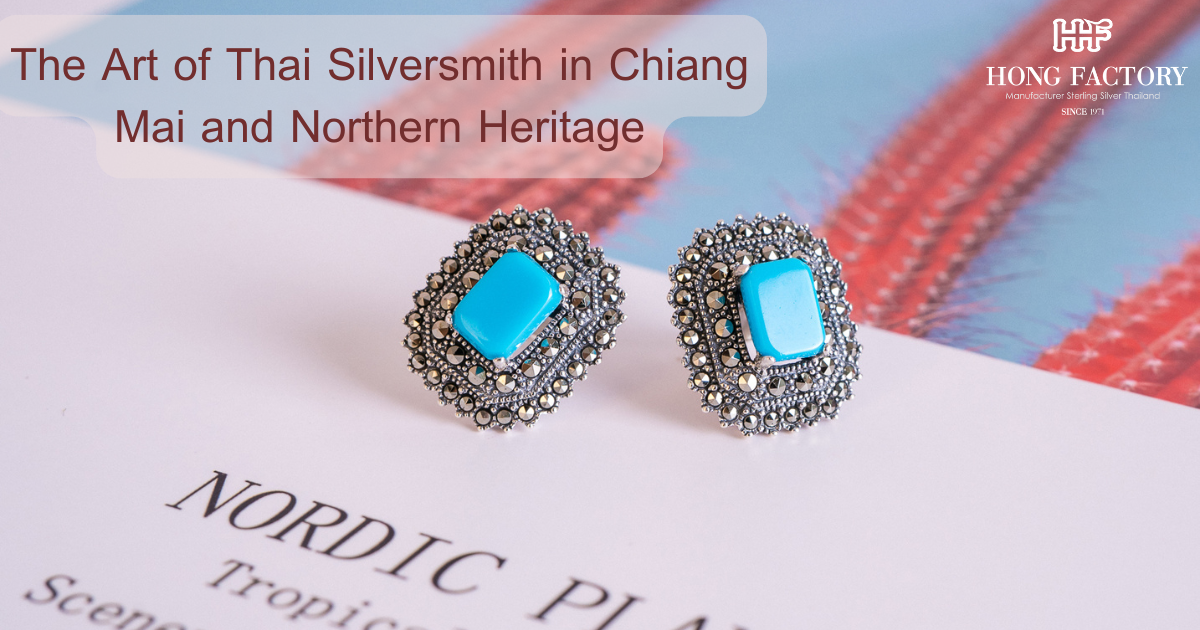Thailand’s northern region, particularly Chiang Mai, holds a legacy of craftsmanship that shines brighter than silver itself. Known for its deep cultural roots and devotion to artistry, the area has nurtured generations of silversmiths who have transformed their heritage into timeless treasures.
From temple decorations to intricate jewelry, the art of Thai silversmith in Chiang Mai stands as a symbol of patience, spirituality, and creativity that continues to captivate collectors and art enthusiasts around the world. marcasite jewelry

The Cultural Roots of The Art of Thai Silversmith
The Art of Thai Silversmith traces its origins back to the Lanna Kingdom, when silverwork flourished as part of northern Thailand’s identity. Silversmiths of the time crafted ornaments for royal courts, religious offerings, and Buddhist temples. The intricate repoussé and chasing techniques, which involve hammering delicate designs into thin sheets of silver, became a defining feature of Lanna artistry.
Chiang Mai, once the heart of the Lanna Empire, remains a center of this ancient craftsmanship. Streets like Wau Lai Road — often called the Silver Street — are lined with family-run workshops that have preserved these traditional techniques for generations. Here, artisans work by hand using simple tools, crafting silverware, jewelry, and ceremonial objects that tell stories of faith and folklore.
Techniques that Reflect Tradition and Precision
Each piece of silver created in Chiang Mai carries the mark of human touch and spiritual devotion. The process begins with raw silver, usually 92.5% sterling quality, which is melted and hammered into thin sheets. Using chisels, hammers, and engraving tools, artisans bring designs to life through painstaking detail — floral patterns, Buddhist symbols, and mythical creatures like the Naga serpent or Singha lion.
The repoussé technique allows them to form raised relief designs, while chasing adds intricate details to the surface. Some artisans also incorporate filigree work, weaving fine silver threads into elegant motifs. These techniques, practiced by hand for centuries, give each creation its distinctive texture and depth — a true testament to the mastery and patience of Thai silversmiths.
Chiang Mai’s Silver Temples: Living Testaments of Craftsmanship
One cannot speak of Chiang Mai’s silver heritage without mentioning Wat Sri Suphan, the famous Silver Temple. Located on Wau Lai Road, it stands as a masterpiece of contemporary and traditional Thai silversmithing. Every panel, door, and wall of the temple is covered in intricate silverwork, telling stories of Buddhist teachings and Lanna folklore. Local silversmiths, monks, and apprentices collaborated to create this living monument, demonstrating how art and spirituality coexist in perfect harmony.
Wat Sri Suphan is not only a place of worship but also a training ground for future silversmiths. Through temple workshops, artisans pass down their skills to younger generations, ensuring that the craft continues to thrive despite the pressures of modernization and mass production.

A Modern Revival Rooted in Tradition
Today, Chiang Mai’s silver artisans continue to adapt and evolve while maintaining their connection to heritage. Many workshops now produce jewelry that appeals to international markets, blending traditional motifs with contemporary design aesthetics. Silver bangles, necklaces, and earrings inspired by ancient patterns find new life in modern fashion collections.
Collaborations between Thai artisans and global designers have also helped revive interest in northern silverwork. These partnerships emphasize sustainability, fair trade, and the preservation of cultural identity. As a result, Chiang Mai has gained recognition not just as a tourist destination but as a global hub of ethical craftsmanship.
Preserving a Northern Legacy for Future Generations
Despite modernization, Chiang Mai’s silversmithing community remains deeply committed to preserving traditional knowledge. Workshops and vocational schools are teaching younger artisans the time-honored methods of hammering, engraving, and repoussé, ensuring that these techniques are not lost to history. Local organizations and heritage groups also promote handmade silver products to international audiences, encouraging sustainable growth and fair wages for artisans.
This intergenerational transmission of skills reflects the essence of Thai craftsmanship — respect for elders, reverence for tradition, and love for artistry. It ensures that the shimmering beauty of northern silver will continue to inspire future generations.
Conclusion: Chiang Mai’s Silver Soul Shines On
The Art of Thai Silversmith in Chiang Mai is more than a craft; it is a cultural heartbeat that connects past and present. Each piece of silver, whether adorning a temple wall or gracing a jewelry display, carries the soul of Lanna heritage and the spirit of Thai artistry.
Through dedication, patience, and creativity, Chiang Mai’s silversmiths have transformed simple hand tools into instruments of beauty and devotion. As the northern legacy continues to flourish, Thai silver stands as a gleaming reminder that true art transcends time, technology, and borders.
